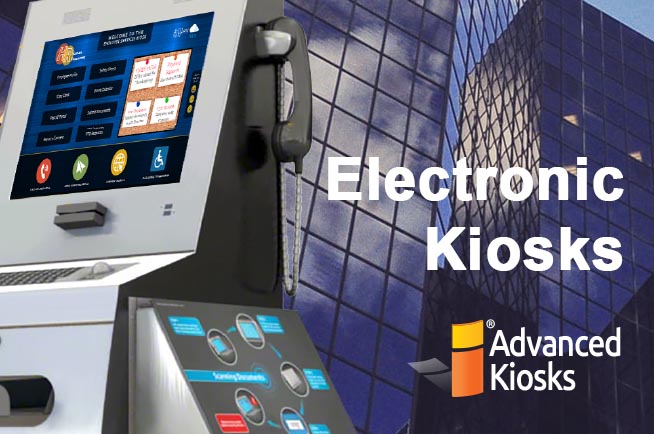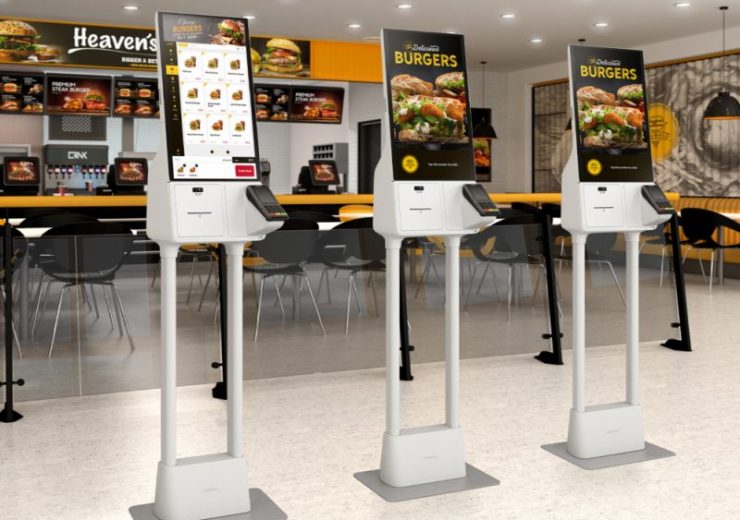As the economy recovers from the COVID-19 pandemic and unemployment remains low, businesses of all types are struggling to deliver more services with fewer staff.
Unemployment levels in mid-July 2022 stood at 3.6% for a fourth straight month, matching a near-50-year low that was reached before the pandemic began sweeping across the country in early 2020. At the same time, many of those who were put out of work due to pandemic-related shutdowns didn’t return to their jobs once the economy began to reopen. According to the National Federation of Independent Business, half of all small businesses have open positions they are unable to fill. The situation is similar for large organizations.
And as part of an effort to cope with staffing shortages, more and more companies are utilizing an electronic kiosk to deliver essential services to both customers and employees.
Streamlining services
They come in various shapes and sizes, but at their core, electronic kiosks are digital devices that allow users to perform tasks independently without the assistance of staff.
The most common form of those devices, of course, is the ATM. Thanks to ATMs, many of us haven’t been inside a bank branch in years. The digital devices allow us to withdraw cash from and make deposits to our accounts without teller assistance, with branch visits reserved for more complicated interactions such as opening new accounts or signing loan documents. In many cases, even those tasks can be performed at an ATM.
It’s much the same with other businesses. Increasingly, companies are allowing their clients to perform tasks on their own time and at their own pace via a digital electronic kiosk.
Examples of how kiosks are being used in businesses include:
The remote office: Many businesses operate 24 hours a day, but employee services such as HR offices may only operate during weekdays. By using a self-service kiosk such as the Office Extension from Advanced Kiosks, employees can receive round-the-clock access to HR services, allowing them to request vacation time or schedule changes; fill out forms and submit applications; remotely scan documents and send them to any email; print forms, documents, or receipts on demand and much more.
When it comes to delivering services to customers, the Office Extension allows them to pay bills through third-party portals securely; place phone calls via an optional VOIP handset through a directory or slideshow of quick-dial buttons and remotely access other customer services.
And if the interaction is more complicated than what can be accomplished in a few minutes, the Office Extension Desk allows users to sit comfortably and spread out their documents.
Wayfinding and building directories: Advanced Kiosks’ wayfinding kiosks can provide visitors with turn-by-turn directions to their destination; notify guests of activity schedules, upcoming events or other information; communicate information about local businesses or attractions and much more. When placed in the lobby of an office building or medical complex, directory kiosks act as a virtual receptionist in your lobby, with a click-to-call phone directory using VOIP technology.
Government services: In December 2021, President Joe Biden signed an executive order with the goal of streamlining government services to eliminate some of the bureaucracy around tasks such as renewing passports, applying for permits and paying taxes. Digital kiosks are a key part of that effort.
Electronic kiosks are also increasingly being used in courthouse modernization. Tasks such as checking in with a parole office, paying traffic fines, applying for a marriage license and more can be accomplished at a kiosk.
Applications abound
Although these are some of the most common uses of kiosks in business, they aren’t the only ones. Businesses that service clients who speak a language other than English, for example, may benefit from deploying Advanced Kiosks’ Interpretation Kiosk. If the client still requires occasional help from a customer service agent, there’s the Assisted Self Service Kiosk, a secure solution that provides a way for people to hold a confidential online conversation and transfer documents safely and securely. For businesses that frequently cope with lines of customers, there’s a dynamic queuing kiosk designed for check-in, processing and visitor data gathering. The kiosk checks in visitors and sets them up in a queue, with queuing status available on-screen or displayed elsewhere for high visibility. Visitors can also be notified via text message when their turn has come.
All sorts of services can be delivered via an electronic kiosk. Businesses benefit from labor savings and increased efficiency, while customers save time and receive an outstanding experience.
To see how your business can benefit from delivering services via kiosk, reach out to the experts at Advanced Kiosks.

